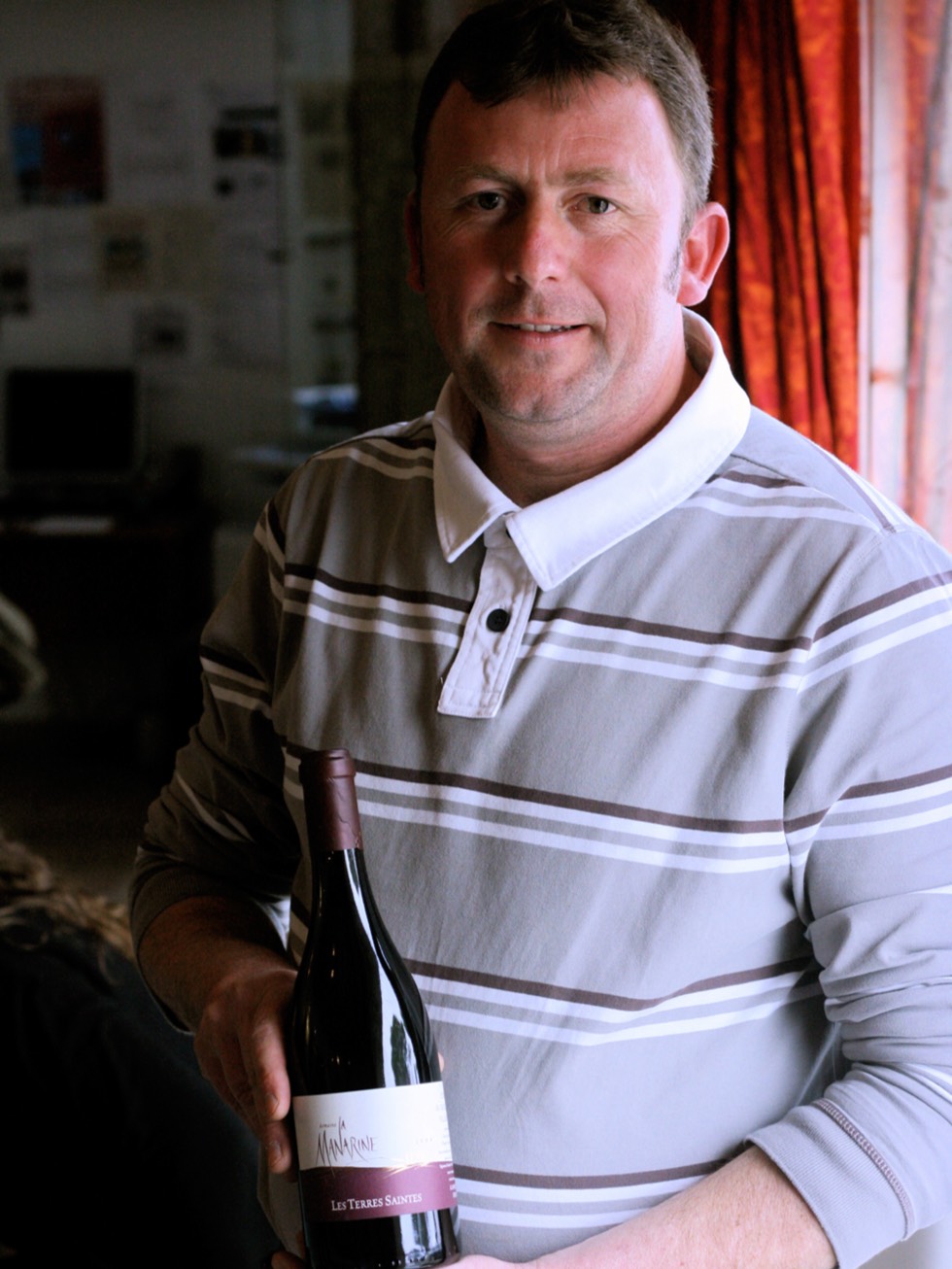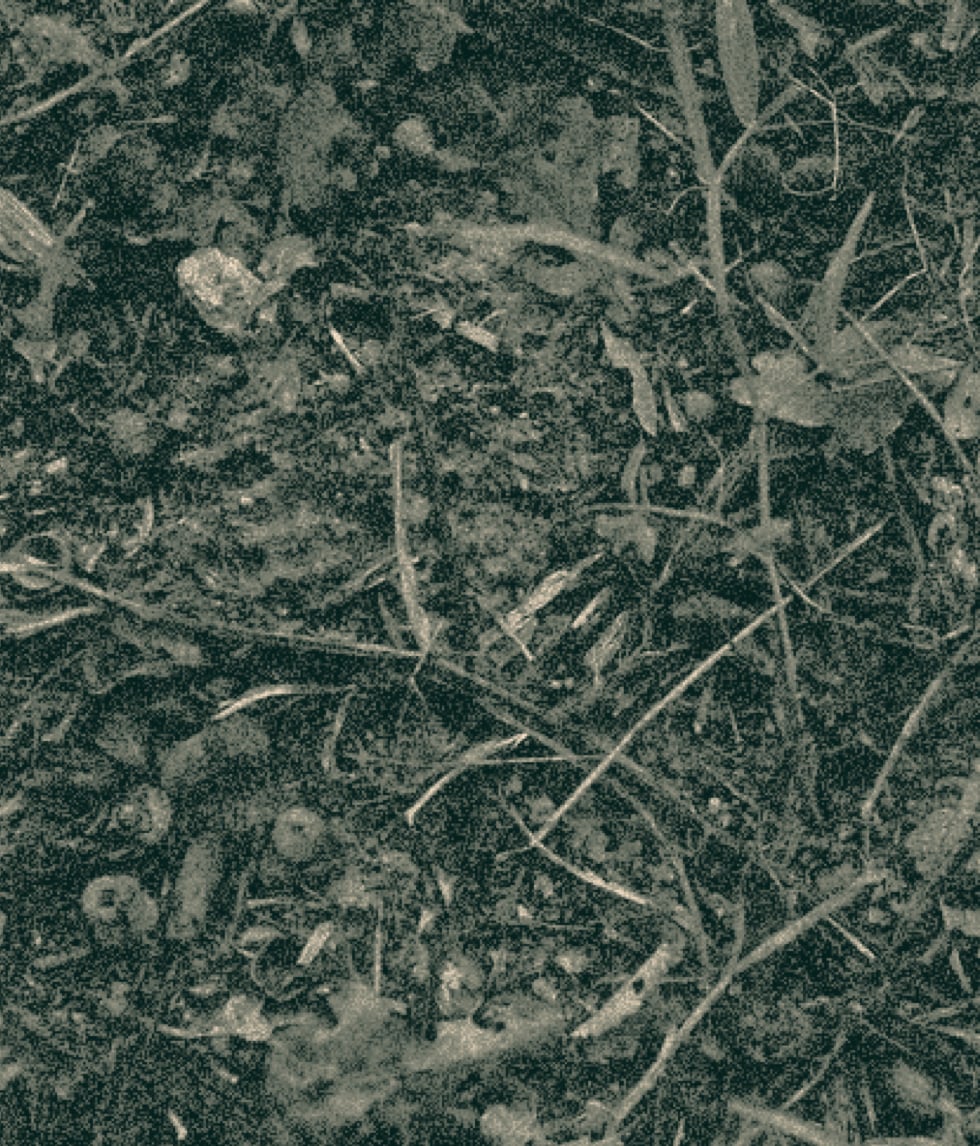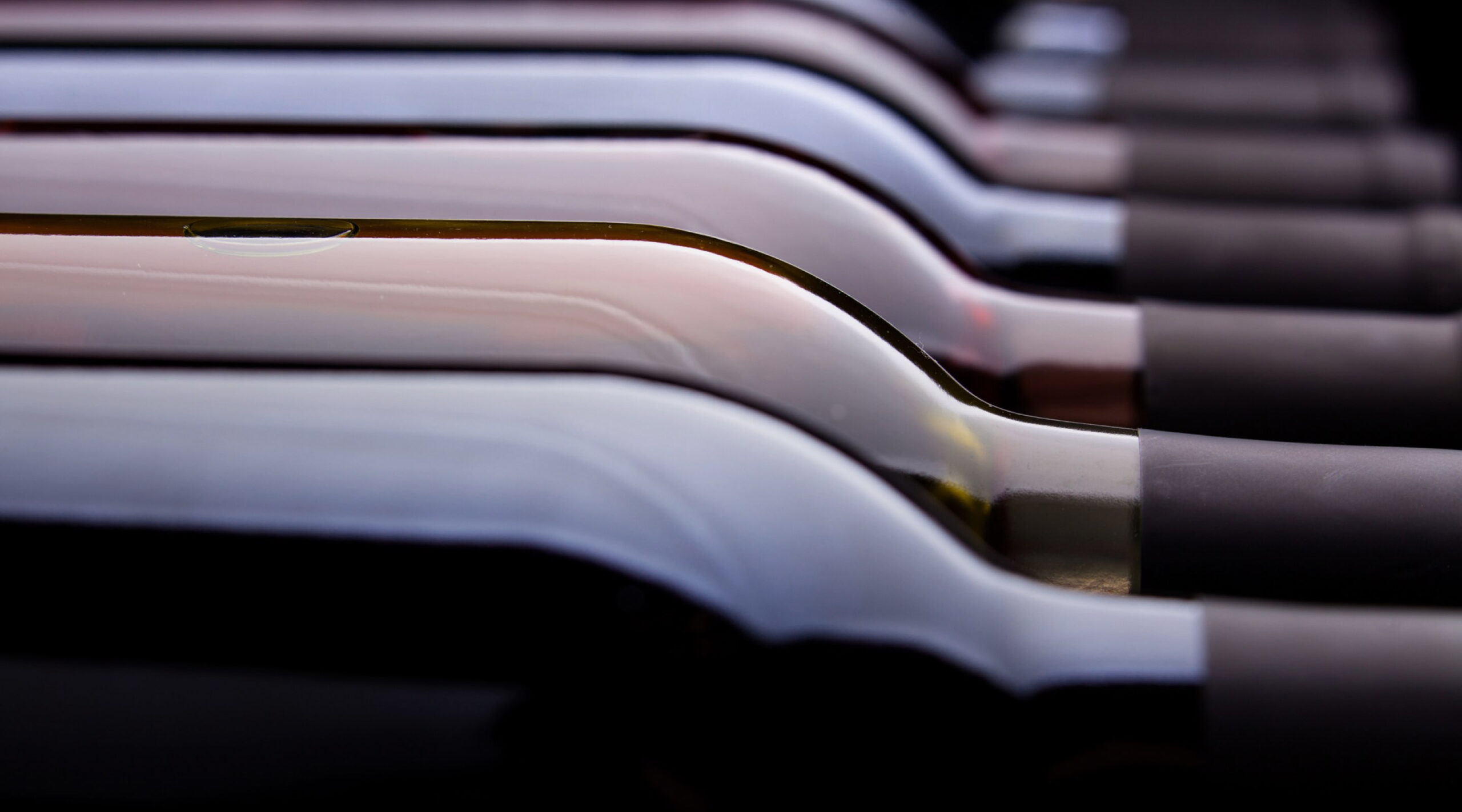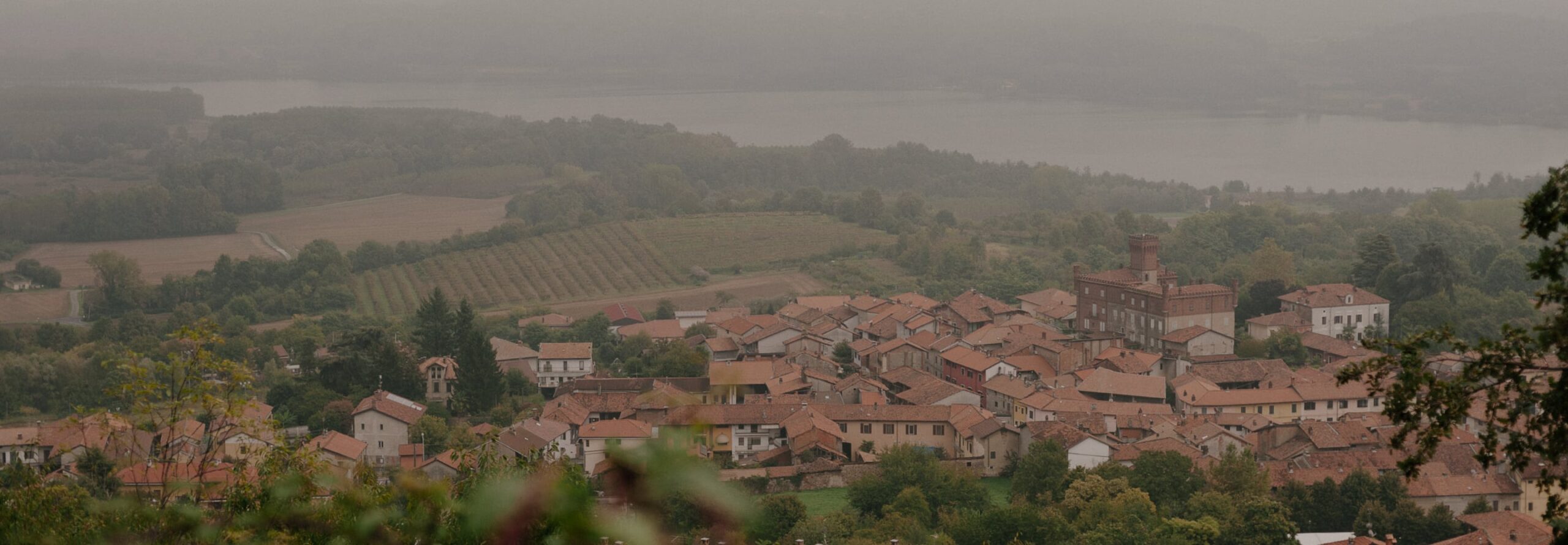Domaine la Manarine was created by Gilles Gasq in April 2001. The winery and majority of his vineyards are located within the commune of Travaillan, on a splendid plateau northeast of Orange in the southern Rhone. Gilles is a talented vigneron who has honed his skills working as an assistant to Paul Jeune, the proprietor of Domaine Monpertuis in Chateauneuf-du-Pape.
Expanding his holdings each year, Domaine La Manarine now encompasses 33 hectares of vineyards situated largely on what is known as the “Le Plan de Dieu”. For generations, this specific terroir has been recognized as unique. Recent research has identified the particular character of the underlying soil: a deep layer consisting of more than 60% hard limestone “galets” (large smooth pebbles). The climate is typically Mediterranean: relatively hot and dry with an average rainfall of between 600 and 800 mm per year. The rains usually come in the form of thunderstorms in late August which provide the vines with the water necessary to finish the maturation process (which tends to shut down under stressful drought conditions). Grenache Noir is the main grape variety of the region. It performs particularly well on this type of soil and gives wines more elegance and aroma than is otherwise common. Gilles also has one hectare of Syrah vines which are used to supplement the Grenache in the “Les Terres Saintes” enabling it to bear the appellation: Cotes du Rhone Villages – Le Plan de Dieu.



Expanding his holdings each year, Domaine La Manarine now encompasses 33 hectares of vineyards situated largely on what is known as the “Le Plan de Dieu”.
The vineyards are principally devoted to Grenache but include several parcels planted to white grape varieties Clairette, Bourboulenc, and Grenache Blanc (recently planted) which are used to make his Cotes du Rhone Blanc. In 2014, Gasq purchased a 3 hectares parcel of Carignan adjacent to one of his Cotes du Rhone parcels to make a special cuvee devoted to this underestimated varietal. Finally, in 2015, Gasq has returned to his roots at Domaine Monpertuis by purchasing two adjacent parcels of Grenache in Chateauneuf-du-Pape totaling 1.5 hectrare.
Domaine La Manarine practices organic viticulture. Work in the cellar is minimal with little intervention. Fermentations are left to start with indigenous yeasts, with no fining and only a light filtration is utilized if needed. Considering the personal attention and great care invested in his wines, his five bottlings offer some of the best value in our entire portfolio.
Farming
Practicing organic since 2011
Treatments
Copper-sulfate only
Ploughing
Annual ploughing to maintain vineyard health
Soils
Limestone and iron-rich clay, quarzite river stones (galets roulés), and sands
Vines
Trained in Gobelet and planted at 4,000 vines/ha, vines average 20-40 years old.
Yields
Controlled through pruning, debudding, and green harvesting
Harvest
Manual, with some machine harvesting, usually in mid-September
PURCHASING
Entirely estate fruit
Fermentation
Following total destemming, wines ferment with spontaneously in stainless-steel and fiberglass tanks.
Extraction
Red wines see pumpovers during cuvaison
Chaptalization
None
Pressing
Pneumatic pressing for red wines. Direct pneumatic pressing for rosé wines.
Malolactic Fermentation
Blocked for rosé and white wines via temperature. Spontaneous, in tank directly following alcoholic fermentation for red wines.
Élevage
White and rosé wines age c. 6 months in stainless-steel tanks. Carignan ages c. 12 months in stainless-steel tanks. Red Côtes du Rhône Rouge ages 20-24 months in stainless-steel tanks. Les Terres Saintes and Châteauneuf du Pape age partially in large, neutral barrels for 12-18 months, with the remainder in stainless-steel tanks.
LEeS
Wines are racked after malolactic and remain on their fine lees until assemblage prior to bottling.
FINING & FILTRATION
Red wines are unfined and unfiltered. Other wines are unfined and see cross filtration.
SULFUR
Applied at harvest, after malolactic, and at bottling, with 25-28 mg/l free sulfur.



